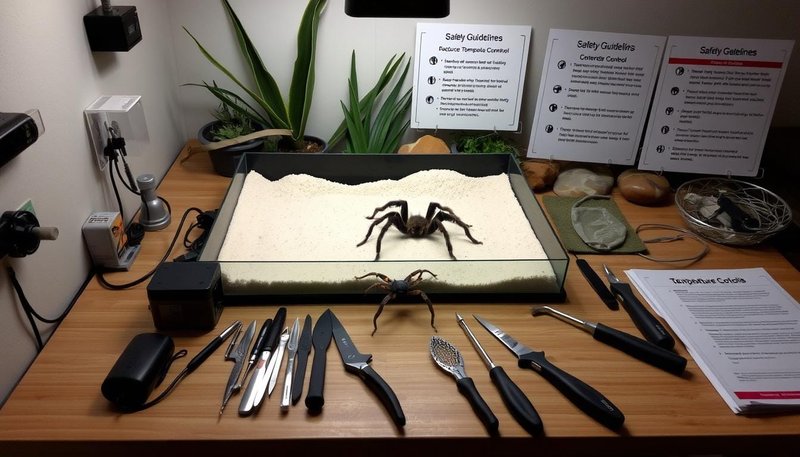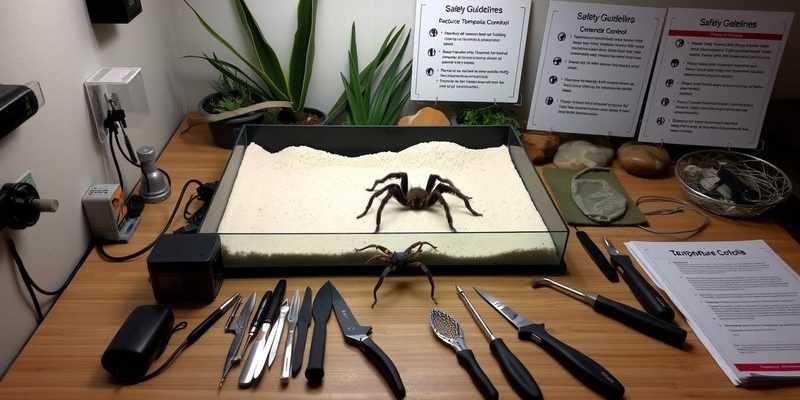
Now, before we get too deep, let’s clarify what a Skeleton Tarantula is. This isn’t just any tarantula; it’s a unique species found primarily in Central America, specifically in the rainforests of Costa Rica and Nicaragua. Known for its striking appearance (those white markings on its legs really stand out), the Skeleton Tarantula can be both mesmerizing and intimidating. But don’t let its looks fool you—there’s a lot more to these hairy creatures than meets the eye.
What Makes Skeleton Tarantulas Unique?
When you first see a Skeleton Tarantula, you might be taken aback by its appearance. They’ve got a notable coloration that sets them apart from other tarantulas. The dark, earthy tones contrast beautifully with the white or cream markings on their legs, creating an almost artistic look. Think of it as nature’s own little work of art! But it’s not just about looks; the Skeleton Tarantula has some interesting behaviors too.
Skeleton Tarantulas are generally considered terrestrial spiders, meaning they prefer to stay close to the ground rather than climbing. This is in contrast to other species that might spend more time in trees or higher surfaces. Due to their habitat preferences, they are often found digging burrows, creating a secure home for themselves. Watching them excavate can be fascinating.
Another unique trait is their temperament. Unlike some species that might bolt at the slightest movement, Skeleton Tarantulas tend to be more sedentary. This often makes them more suitable for handling, although you should always proceed with caution. But let me explain why that’s vital to know if you’re thinking of handling one.
Are Skeleton Tarantulas Dangerous to Humans?
Now, you might be wondering if these tarantulas pose any real danger to you or your family. Honestly, the short answer is no—at least, not in the way you might think. Skeleton Tarantulas can bite, like any tarantula, but they typically do so only when threatened. Their venom isn’t considered life-threatening to humans, though it might cause some discomfort—think of it like a really nasty bee sting.
That said, it’s essential to approach these spiders with respect. Just because they aren’t “dangerous” doesn’t mean they won’t react if they feel cornered. It’s always best to give them a choice when handling. If they’re not keen on being picked up, respect their space. They’ll appreciate it, and so will your fingers!
It’s also worth noting that some people may have an allergic reaction to tarantula bites. While rare, this is something to keep in mind, especially if you or someone in your household has known allergies to other spider bites. You don’t want an unexpected trip to the doctor because of a curious moment, right?
How to Handle a Skeleton Tarantula Safely
If you’re still keen on handling a Skeleton Tarantula, it’s crucial to know how to do it safely. Here are some simple steps you can follow:
- Understand Their Behavior: Before picking one up, watch how they move. If they seem relaxed, that’s a good sign.
- Use a Secure Container: If you’re unsure, always transfer them into a safe, ventilated container first. This way, you can get familiar with their movements without risking a surprise escape.
- Be Gentle: When you finally pick them up, do it slowly and gently. Support their body with your hands, being cautious not to squeeze.
- Keep the Environment Calm: Avoid loud noises or sudden movements around them. They’re sensitive creatures and might react to chaos.
Taking these steps can help create a better experience for both you and your tarantula. Remember, patience is key! If at any point you feel anxious or the spider seems stressed, it’s always best to put them back and try again later.
Creating a Suitable Habitat for Your Skeleton Tarantula
If you decide to bring a Skeleton Tarantula home, creating the right habitat is essential. They thrive in environments that mimic their natural rainforest homes. This means you’ll need to consider factors like temperature, humidity, and substrate.
Start with a tank that’s at least 10 gallons and ensure it has proper ventilation. Using a substrate like coconut fiber or peat moss is ideal—it allows them to dig and create burrows, which they love. Aim for a humidity level of about 60-70% and maintain a temperature around 75-80°F during the day. You can use a heating pad or lamp, but ensure they can escape the heat if they want to cool down.
Incorporate some hiding spots using logs or rocks. These not only serve as shelter but also help them feel secure and reduce stress. And don’t forget about water! A shallow dish with fresh water is essential for hydration. It’s all about making your tarantula feel at home, just like how you’d want a cozy living space for yourself.
Feeding Your Skeleton Tarantula
Feeding is another crucial aspect of caring for your Skeleton Tarantula. They primarily feast on insects, so think of their diet as a mini-bug buffet! Crickets, mealworms, and roaches are all great options to offer.
Here’s a simple feeding guide:
- Size Matters: Choose insects that are about the same size as your tarantula’s body if possible.
- Frequency: Adults can be fed once a week, while younger tarantulas may eat more often—about every 3-4 days.
- Watch for Leftovers: If they don’t eat their food, remove it after 24 hours to keep the habitat clean.
Caring for their dietary needs ensures they stay healthy and active. Plus, it’s pretty fascinating to watch them hunt!
Common Myths About Handling Tarantulas
With so many spider myths floating around, it’s time to clear up some common misconceptions about handling Skeleton Tarantulas. One common myth is that all tarantulas are aggressive. This couldn’t be further from the truth! While some species might be more skittish, Skeleton Tarantulas are often mild-tempered.
Another myth is that tarantulas are dirty or carry diseases. In reality, they’re relatively clean creatures. As long as you maintain their habitat, you’ll find they don’t produce unpleasant odors like some other pets might.
Lastly, some believe handling can harm the tarantula. While it’s true that frequent handling can stress them out, occasional gentle interactions won’t hurt. Just remember to pay attention to their cues. If they seem uncomfortable, it’s your sign to gently put them back down.
Final Thoughts on Handling Skeleton Tarantulas
So, is handling the Skeleton Tarantula safe? Overall, yes! But with the right approach, a good understanding of their behavior, and a safe environment, you can enjoy a fascinating bond with these unique spiders. Just remember to be patient, gentle, and respectful of their nature.
If you’re considering adopting one, think about the commitment involved. They can live for many years, so be ready for a long-term companion. By taking the time to learn and provide proper care, your Skeleton Tarantula can thrive and share its intriguing world with you. Happy exploring!

